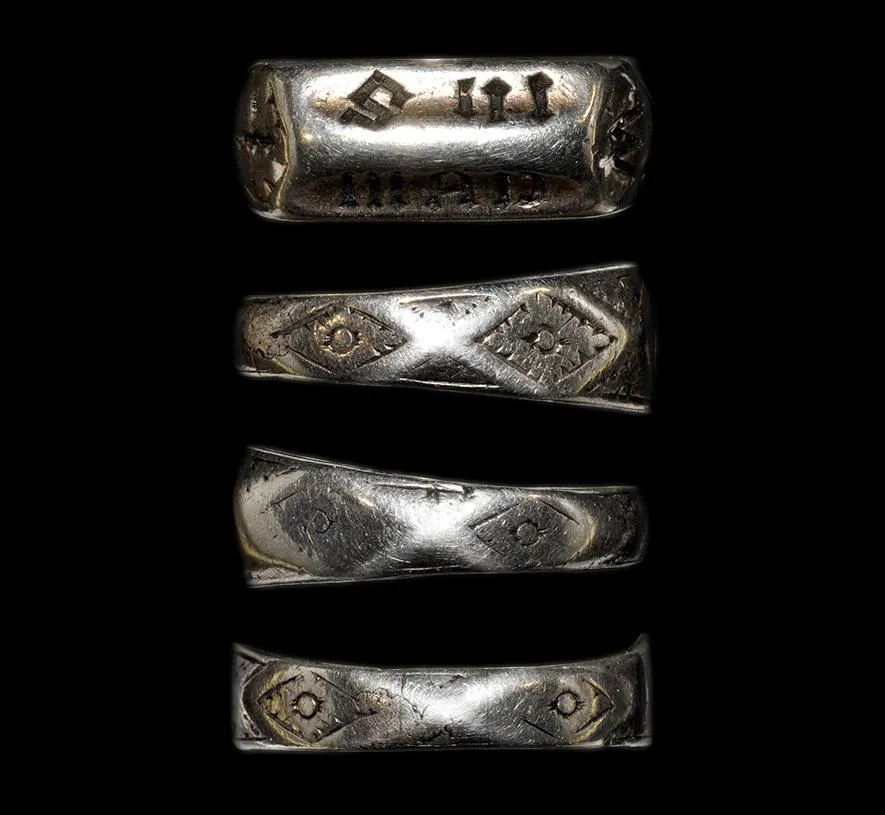French Theme Park “Battles” British Government to Keep Joan of Arc’s Ring
After buying a ring purportedly owned by Joan of Arc, a French history park owner defies UK demands
/https://tf-cmsv2-smithsonianmag-media.s3.amazonaws.com/filer/64/28/6428d76e-1760-4469-b8d0-c3cbf0f4a28b/last_confession_of_joan_of_arc.jpg)
Last Sunday, 5,000 French patriots crowded Puy du Fou amusement park near Nantes and sang La Marseillaise as an actress dressed as Joan of Arc, trailed by a procession of knights in armor, celebrated the return of a piece of French history. The amusement park bought Joan of Arc’s ring at auction, bringing the relic back to Gallic soil for the first time in approximately 600 years.
Phillipe de Villiers, founder of the history-themed park—something akin to Medieval Times on steroids—began by announcing that “[T]he ring is a little bit of France that has returned," Henry Samuel at the Telegraph reports. "The ring has come back to France and will stay here,” de Villiers said.
Then he told the crowd that the British government was demanding the ring's return.

As it turns out, Puy du Fou failed to pay an export tax on the ring, which is required by the British goverment for objects of “national and historic” importance that are priced at roughly $55,000 or more. The theme park, which reportedly paid nearly $425,000 for the ring at auction, failed to pay the tax before transporting the ring to Nantes, despite being advised to by the auction house. That means, if the export fee is not paid, another buyer has the chance to scoop the relic up and bring it back to England, though it’s unclear how they will snatch it back from Villiers.
The ring is believed to be one that Joan of Arc’s parents gave her to celebrate her first communion. According to France 24, Joan, who fought against England during the Hundred Years' War, was captured by soldiers from Burgundy. She was handed over to the English before she was tried for heresy and burned at the stake.
Her actions made her become a French national hero and also canonized as a Catholic saint.
Legend has it that archbishop of Winchester, Henry Beaufort, received the ring before Joan’s death, taking it with him to England. The gold-plated silver ring fits historical descriptions of Joan’s ring, described a bulky piece of jewelry engraved with three crosses and JHS-MAR, short for Jesus-Maria, and testing of the ring at Oxford places it in the 15th century. Still, there are those that doubt its authenticity.
Olivier Bouzy, head of the Joan of Arc Archives in Orléans, tells France 24 that “around Joan of Arc, we already have several cases of false objects,” including a mummy’s rib from Egypt that was passed off as the Saint’s.
Still, believers want the ring to stay in France. “It is inconceivable that the ring leaves France or is put back on the market for a British buyer to put in another bid," Nicholas Villiers, son of Phillipe, reports Samuel.
It remains to be seen if the French will remain as defiant as “The Maid of Orleans” or if they will relent and pay the export fee.